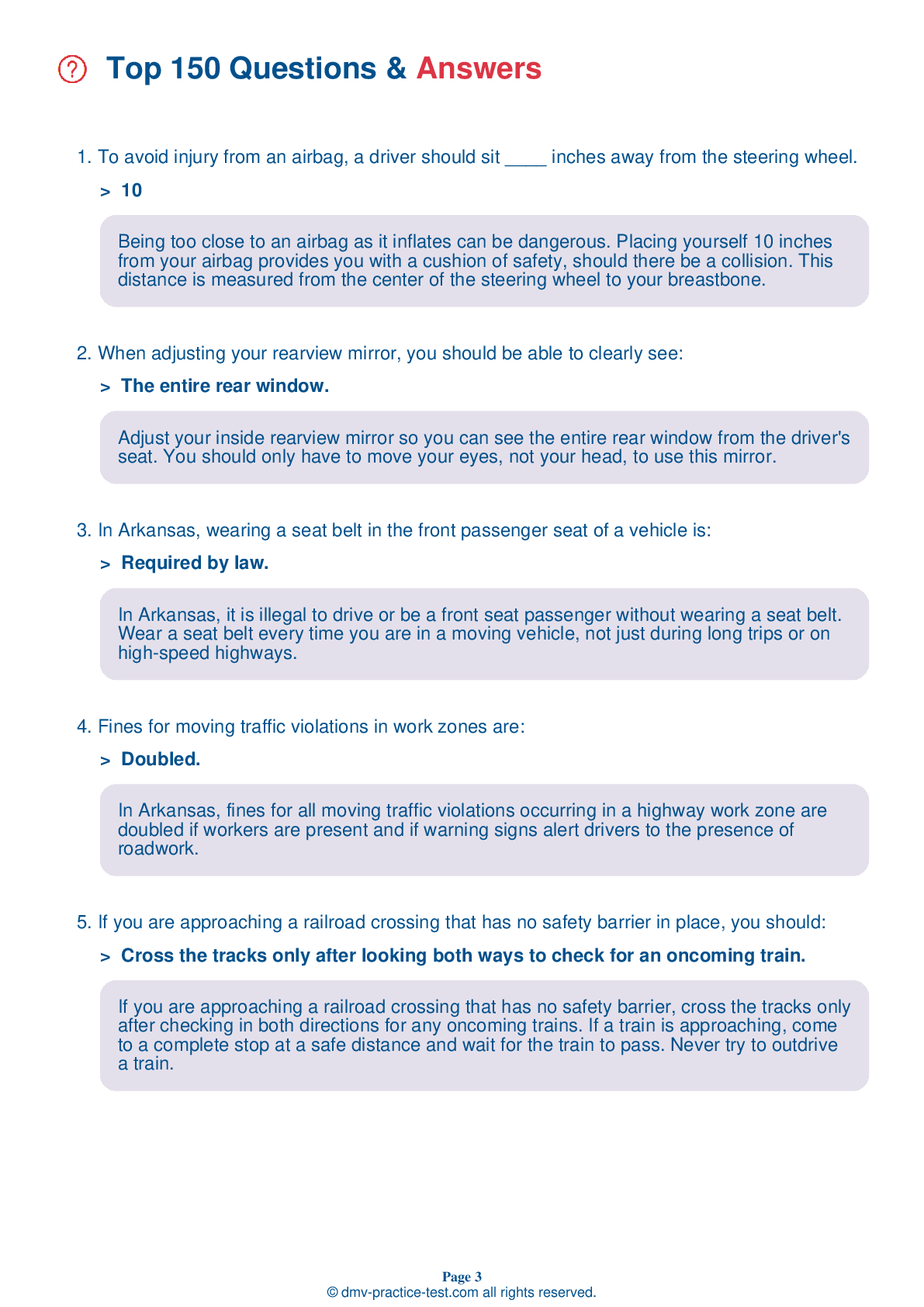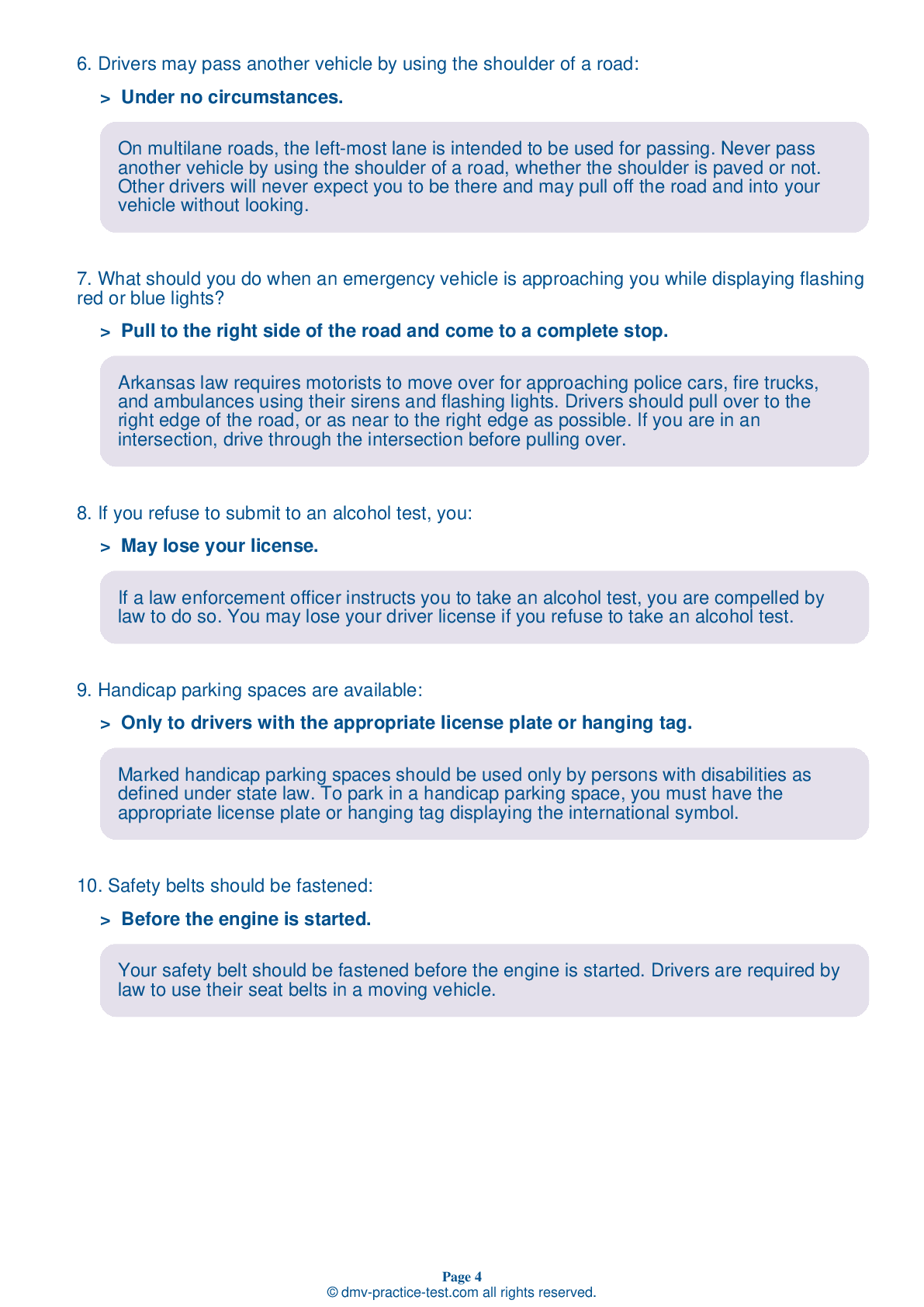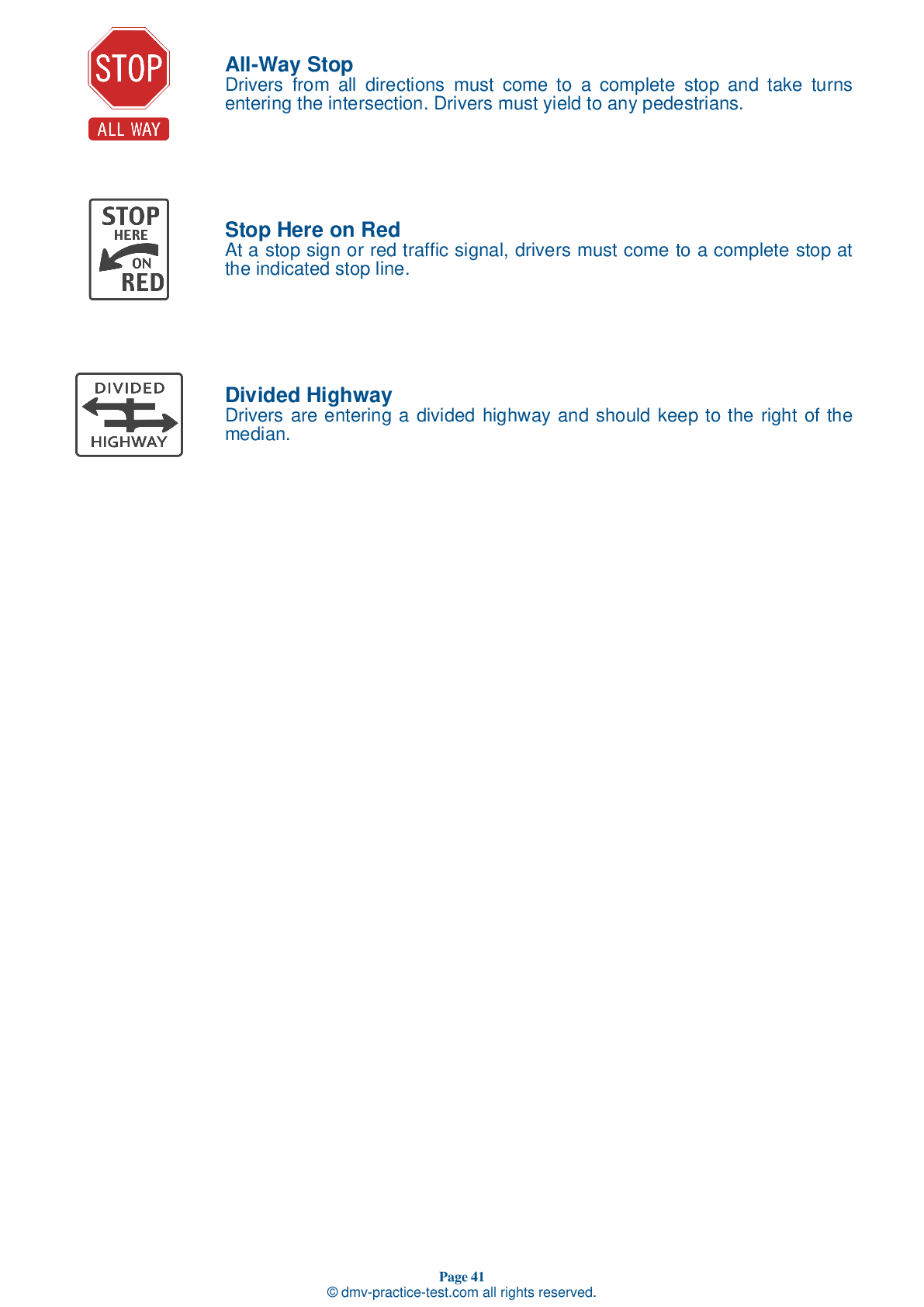FREE Arkansas DMV Practice Test #3 Page 3 of 3
This Arkansas DMV practise tests was recently updated for January 2025. It includes questions based on the 2025 Arkansas Driver Handbook's most essential traffic signs and restrictions. Use actual questions that are very similar (often identical!) to the DMV driving permit test and driver's licence exam to study for the DMV driving permit test and driver's licence exam.
To help you remember the concepts, each practise test question includes a recommendation and explanation. The written component of the official DMV test will include questions about road rules, traffic signs, and driving statutes, as well as information from the Driver Handbook.
To receive the required passing grade, you must correctly answer 20 out of 25 questions. Take our DMV practise exam to help you prepare for your Arkansas instruction permit or driver's licence.
The DMV exam is available in multiple languages.
Using any form of testing aid will result in an automatic fail, and the DMV may take further action against your driver's licence, so don't do it.
17 . After you have passed a vehicle moving in the same direction, it is safe to move back into the right lane:
When passing, you should not return to your original lane until you can see both headlights of the passed vehicle in your rearview mirror. Always check your blind spots before moving back into your original lane.
18 . A pedestrian starts to cross the street after the "Don't Walk" signal begins to flash. The pedestrian is in the middle of the street when your signal light changes to green. You should:
At a green light, you must give the right-of-way to any vehicle, bicyclist, or pedestrian in the intersection. If a pedestrian begins crossing the street after the traffic signal light starts flashing, wait until they have crossed the street before proceeding.
19 . When preparing to make a left turn from a two-way street, you should drive:
When you are turning left from a two-way street, begin in the lane closest to the centerline and start your turn just before the front of your car reaches the center of the intersection. Do not cut the corner. Steering hand-over-hand, turn into the first available legal lane.
20 . At dawn or dusk and in rain or snow, it can be hard to see and be seen. A good way to let other drivers know you are there is to turn:
You must use your headlights at any time when conditions prevent you from seeing other vehicles and when it may be difficult for other drivers to see you. Always use your low beam headlights if weather conditions require you to use your windshield wipers.
21 . When passing another car, you have enough space to return to the driving lane:
Before you return to the driving lane when completing a pass, be sure there is a safe gap between your vehicle and the passed vehicle. When you can see both headlights of the vehicle in your rearview mirror, it is safe to return to the driving lane.
22 . Using a cell phone in a school zone where students are present is:
No driver of any age may use a cell phone while driving in a school zone during school hours and where students are present. No driver of any age may read or send text messages while driving, regardless of the location.
23 . When you are behind a motorcycle, you should:
When following a motorcyclist, allow for at least a three- to four-second following distance. Motorcycles can stop quickly and following them too closely endangers your life and that of the motorcyclist. If the motorcyclist should fall, you need extra distance to avoid the rider. The chances of a fall are greatest on wet and icy roads, gravel roads, and metal surfaces such as bridges, gratings, and streetcar or railroad tracks.
24 . If your car becomes disabled while on the highway, you should:
If your vehicle becomes disabled, you must (if possible) park with all four wheels off of the main-traveled portion of the road.
25 . To know where traffic is behind you:
Drivers should check their rearview mirrors often to stay aware of the position of traffic behind them.
See the exact questions that will be on the 2025 Arkansas DMV exam.
99.2% of people who use the cheat sheet pass the FIRST TIME
LT gives us an insight on how the cheat sheet provided her with all the study questions she needed before taking her test.
Joe initially studied with the handbook and failed his test, he eventually found us online, studied and pass his test the first time around.



